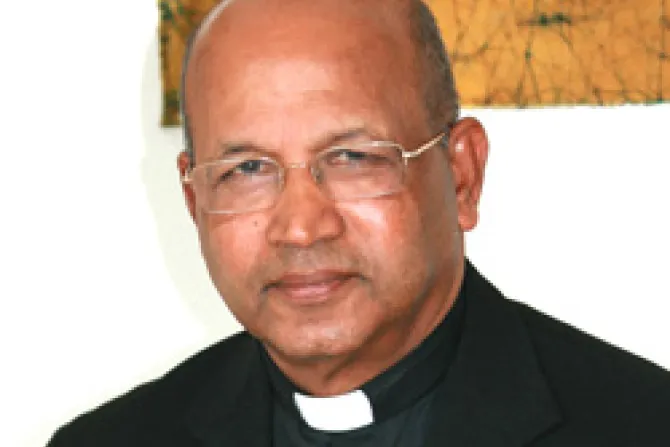Jul 22, 2010 / 22:52 pm
Despite increased persecution, vocations to the priesthood in the north region of India are continuing to grow. Bishop Anthony Chirayath of Sagar Diocese in the state of Madhya Pradesh reported that the number of candidates to the priesthood in his diocese has been on the rise for the past decade.
“When the diocese started in 1968 as an exarchate there were only 600 Catholics and three priests – now we are (at) 35,” he told the news agency for the pastoral charity, Aid to the Church in Need (ACN).
India’s Minister for International Affairs reports that Madhya Pradesh had 654 religious-related violent incidents in 2009, the second-highest in the country.
Bishop Chirayath noted that it has taken courage for young people to step forward to serve in the Church in the face of violence and family circumstances. “They know, after (violence in) Orissa, that there are persecutions and these incidents – the killing of priests and sisters – are all known to every young man or woman.
“But in spite of that they come forward to be priests or sisters.”
“In some cases only - children come forward – it takes courage to proclaim Jesus to the non-Christian world, it is a challenge,” the bishop continued.
He noted that although many religious sisters have been attacked, sexually assaulted, or killed, young women too are answering their vocational calls.
“There are still plenty of vocations, God has blessed us,” commented Bishop Chirayath.
The bishop heads a diocese in the Syro-Malabar Church, an Eastern church in full communion with the Pope. Many vocations come from the southwestern state of Kerala where the Syro-Malabar community is particularly strong, ACN News reports.
“We are sons of Saint Thomas – part of a tradition of faith stretching back 2,000 years,” the bishop said. He credited both the prevalence of family devotions like the Rosary and youth involvement in social and religious activity as factors which encourage vocations.
Bishop Chirayath said that when he became bishop four years ago, the diocese lacked a minor seminary and students were placed under the parish priest.
The new St. Mary’s Minor Seminary, built a few miles from the bishop’s residence, can accommodate 15 students but currently has 25 minor seminarians living there. It has four classrooms, a library and small offices for teachers but still needs a chapel and a dining room.
The bishop called the minor seminary “an essential element in the formation of future priests.”
Prospective priests enter the minor seminary for three years after high school, before going through one year of intense spiritual formation at centers in neighboring dioceses. They then spend three years at the major seminary, where they receive intensive training in Hindi, English and basic theology. They also study to enter university so they can secure a philosophy degree.
ACN is providing more than $23,000 for the construction of the seminary chapel, which will be able to accommodate 60 people.
“In a proper chapel we can give them a proper liturgical formation – in a chapel where there is the Blessed Sacrament, a crucifix and so on,” Bishop Chirayath told ACN News, deeming a place of prayer to be “central.”
(Story continues below)


